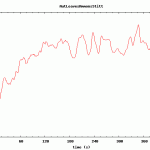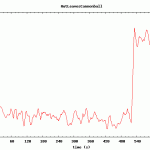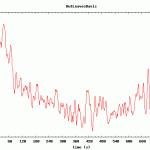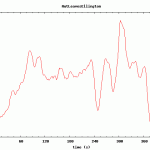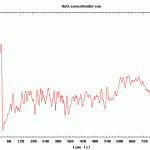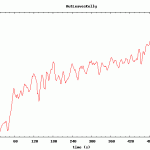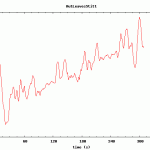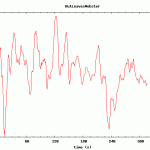A few years ago Paul Lamere from The Echo Nest posted some experiments in click track detection: http://musicmachinery.com/2009/03/02/in-search-of-the-click-track
While we’re not interested in finding click tracks in jazz recordings, the question of beat duration stability is an interesting one for jazz. What, if anything, can you tell about the players on a recording by analyzing the stability of the beat? Does the drummer determine the tempo of a performance? If so, do different drummers have identifiable beat stability profiles? Does a group maintain a beat stability profile across different performances of the same composition? Across different compositions?
A nice thing about working with jazz is that there are often lots of different versions of a given composition by both the same group and by different groups. So you can compare, for example, ten different performances of Autumn Leaves by ten different groups, or sometime even ten different performances of one composition, say Ornithology, by one performer, Charlie Parker.
Just to get things rolling I decided to do a version of Paul’s analysis on ten recordings of Autumn Leaves by ten different groups. I used the Echo Nest remix API to gather the data and python/gnuplot to make the graphs of beat length over time. The X axis is elapsed seconds in the recording, the Y axis is the duration of each beat. I applied a little bit of smoothing to the data so that the trends are easier to see.
We’re still listening to the tracks while looking at these graphs to try to understand if they’re telling us anything interesting. At the least they’ve suggested a bunch of other experiments to do, particularly looking at multiple recordings of the same composition by the same group to see if a beat duration profile exists. More on that soon.
Final note: the Echo Nest analyzer borks on the Ahmad Jamal recording (and Don Byas and possibly some others). So that big plateau you see towards the end is an artifact produced by bad/confused output rather than a big change in the beat duration. You should always do a reality check of some sort on your analysis results!

